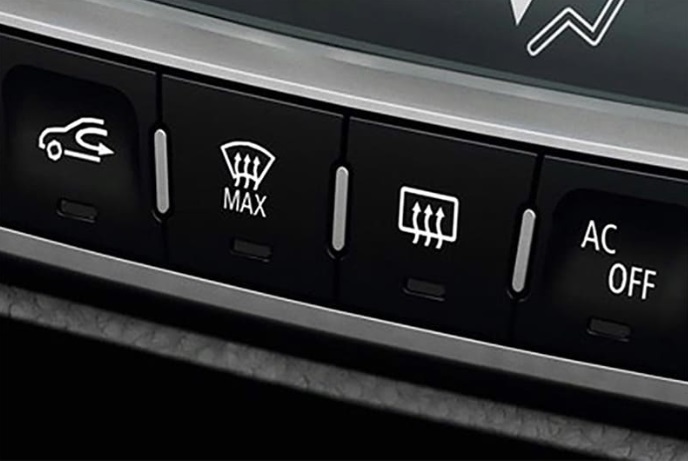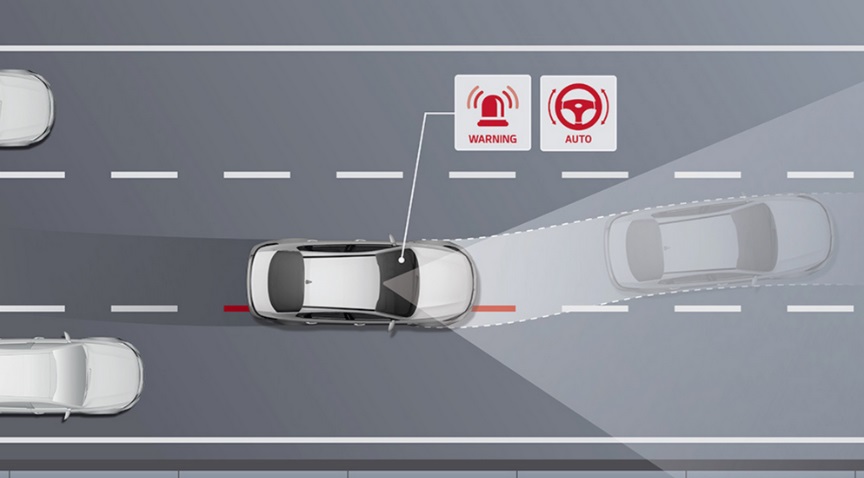Driving in stormy weather can be extremely dangerous due to reduced visibility, slippery roads, and other complexities.
Hence, automobile manufacturers have equipped vehicles with numerous advanced features and technologies, such as rear traffic alerts and self-drying mirrors, to ensure the utmost safety for drivers and passengers.
Automatic Mirror and Rear Window Defogging
When driving in the rain, water can easily accumulate on the rearview mirrors and rear window, obstructing the driver’s vision. Therefore, the mirror defogging feature and automatic rear window defogging are considered a “lifesaver” for drivers, as they eliminate water buildup and ensure better visibility while driving.
Hill Start Assist and Downhill Assist
When navigating hilly or mountainous areas in stormy weather, vehicles may experience sliding or wheel spinning. This is where Hill Start Assist (HSA) proves its worth, aiding drivers in maintaining better control of the steering wheel. As the driver switches from the brake to the accelerator, the system stabilizes the vehicle by holding its position for up to three seconds.
On the other hand, Downhill Assist, when engaged, helps control the vehicle’s speed while descending steep slopes, reducing the need for continuous braking, which can overheat the brake pads and cause brake fluid to boil, leading to brake failure.
With these two features, drivers can confidently navigate steep inclines and declines without worry.
Blind Spot Warning
Heavy rain and strong winds can obstruct the driver’s vision, making it challenging to observe nearby objects or approaching vehicles. The blind spot warning feature utilizes cameras, radar, or ultrasonic sensors to detect vehicles that the driver cannot see in the side mirrors or rearview mirror. Some systems also provide audible alerts to help drivers avoid collisions in blind spots, especially during lane changes, when being overtaken, or when overtaking other vehicles.
Rear Cross-Traffic Alert
During stormy weather, when visibility is limited, and reversing is challenging, the Rear Cross-Traffic Alert feature becomes indispensable.
This system relies on corner sensors installed on the left and right sides of the rear bumper, emitting radar signals. When the vehicle is in reverse, the system automatically activates, and the sensors begin scanning the left and right areas at the rear of the vehicle to detect approaching objects. The effective range of the system may vary depending on the manufacturer’s design, but the sensors typically scan a distance of 20 to 30 meters.
If the system identifies an object within this range as a potential hazard, it alerts the driver through visual and audible warnings, helping them take timely action to avoid a collision.
Lane Keeping Assist
Driving on highways in stormy weather can make it challenging to maintain your lane position.
Lane Keeping Assist comes into play here, alerting the driver with visual or audible warnings if the vehicle deviates from its lane, helping them steer back into the correct lane.
Additionally, some vehicles are equipped with other features that provide maximum support for drivers in stormy conditions, such as Traction Control, Electronic Stability Control, and Electronic Brake Force Distribution.
Apart from relying on these in-built vehicle features, drivers should also develop skills to handle emergency situations when driving in stormy weather.
Use Low-Beam Headlights Instead of High-Beam Headlights
While high-beam headlights offer better illumination than low-beam headlights, they can cause glare in rainy conditions. Therefore, drivers should opt for low-beam headlights or use the auto setting, along with fog lights, to ensure better visibility while driving and help other drivers spot them easily.
Additionally, using hazard lights can alert oncoming traffic and vehicles behind you, reducing the risk of accidents in stormy weather.
Avoid Sudden Acceleration, Braking, and Steering
When driving in the rain, it is crucial to avoid sudden acceleration and abrupt braking. Instead, anticipate your stops and gradually reduce speed by applying the brakes early. Rain makes the roads slippery, increasing the braking distance. Early braking helps avoid sudden stops and reduces the risk of skidding, which can lead to loss of control and potential collisions with vehicles behind you.
Additionally, when driving in the rain, it is advisable to use lower gears. Lower gears provide higher torque, making it easier to navigate obstacles on the road and accelerate when necessary.
Stop Driving and Find Shelter in Heavy Rain and Strong Winds
In reality, driving in severe stormy weather is highly dangerous. If it’s not necessary, it’s best to avoid driving altogether and wait for better weather conditions. If the rain and winds become too intense, find a safe place to pull over and wait until the weather improves to continue your journey. This ensures your safety and the safety of other road users.
TH (Tuoitrethudo)
Illustrative image: Internet

















































